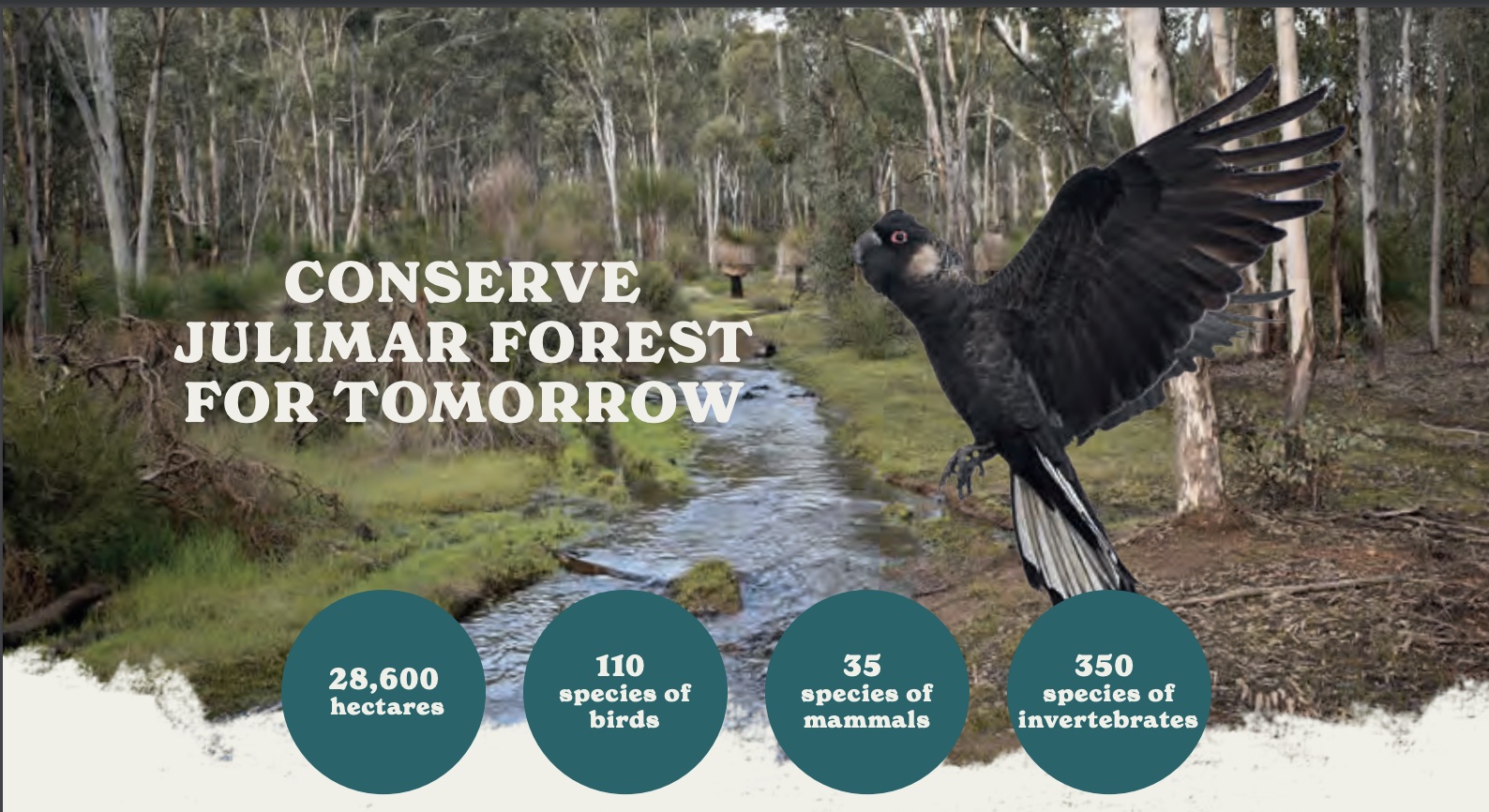
Why Julimar Should Become a National Park
For over 30 years, Julimar Forest has been recognised as an area of high conservation value
for its flora and fauna biodiversity and habitat value. This is still considered the case today.
National Park status would provide the legislative protection for Julimar Forest’s ecological value
and recreational use. It would allow planned and respectful use of the
Forest whilst minimising the destruction and degradation caused by its diverse users.
Julimar Forest is at the northern end of WA’s jarrah forest, within an agricultural area that has
been extensively cleared.
Its 28,600 hectares contain at least20 vegetation communities including:
- Mixed woodland of Wandoo, Powderbark Wandoo and Marri (Eucalyptus wandoo, Eucalyptus accedens and Corymbia calophylla).
- A large area of mid open forest of Jarrah and Marri with several Banksia species Eucalyptus marginata and Corymbia calophylla with Banksia sp).
- Tall shrubland of Pingle and Roadside Tea-tree (Banksia squarrosa ssp squarrosa and Leptospermum erubescens).
- Open heath and riparian communities.
Julimar Forest is ecologically significant and has been recognised as a Key Biodiversity Area (Birdlife Australia):
- It provides vital habitat for 110 recorded species of birds, 35 species of mammals, and an estimated 350 species of invertebrates.
- It contributes to the conservation of vulnerable species such as the Black-gloved Wallaby, Woylie and Chuditch and is a key site for the Chuditch Relocation Program.
- Large numbers of endangered Carnaby’s Black Cockatoo use the many nesting hollows on an annual basis.
- Over 500 wildflower species have been found in the Forest including 27 known priority species.
- The Forest is part of the catchment of the Avon River, which becomes the Swan River which flows through Perth.
Julimar Forest needs urgent protection. Current risks include:
- The lack of a management plan.
- Lack of controls for dieback.
- Uncontrolled vehicle access and consequent erosion.
- Mining – the Forest is covered by mining leases and exploratory drilling for rare earth metals has already commenced as part of a substantial mining proposal.
- Feral animals – particularly pigs.
- Declining rainfall, risk of wildfire and impacts of climate change.
It is recreationally significant because:
- Of its proximity to Perth – it is easily accessible to the metropolitan area by road.
- It provides vital opportunities for people of all generations to spend time in a natural environment, to connect to country; this is a known factor in supporting physical and mental health.
- The Camino Salvado Pilgrims’ Trail passes through the Forest from its southern to northern borders.
- Its comprehensive track network enables access for bushwalkers and bike riders.
The Julimar Conservation and Forest Alliance are campaigning to get the Forest the protection it deserves through National Park status. We are:
- Collecting data on the flora and fauna species in the Forest.
- Raising awareness about the high conservation value of the Forest, its biodiversity, its ecological communities and their threats.
- Promoting Julimar Forest for its recreational and educational qualities and its community value.
- Developing partnerships to maximise environmental protection for the Forest.
JULIMAR FOREST BELONGS TO YOU & ME. THIS IS OUR NATURAL CAPITAL.
THIS IS OUR HERITAGE.

Great job, Julimar National Park!
Thank you Sara. We will have an ‘on-line’ petition soon that you might like to sign.